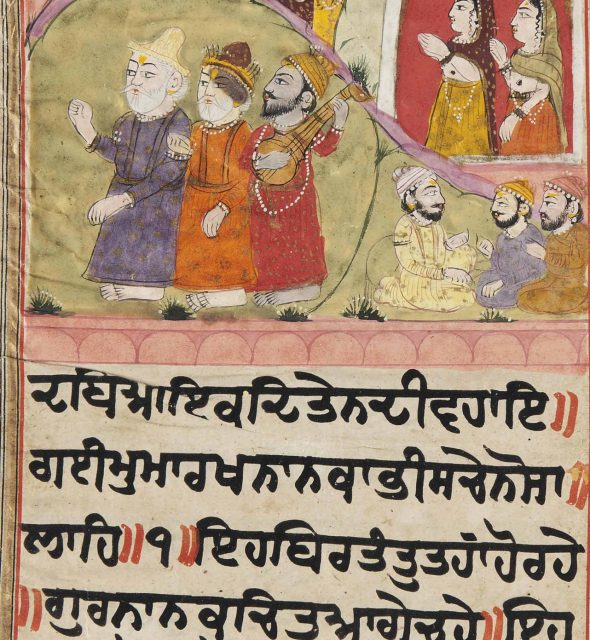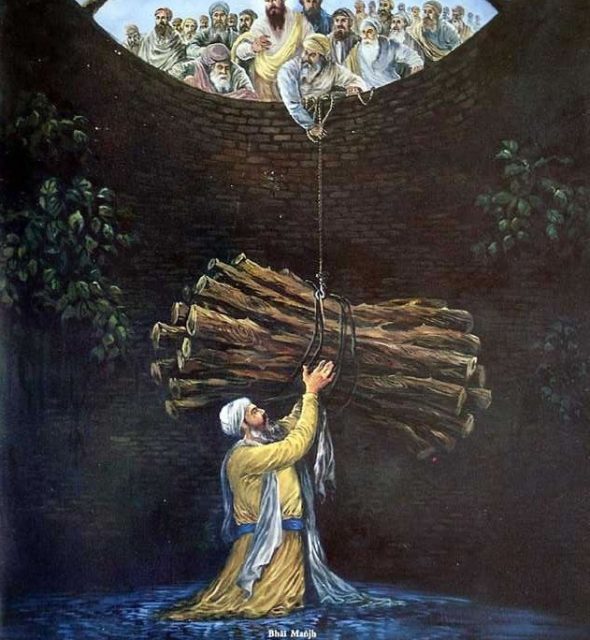DAN SINGH, a Brar Jatt of the village of Mahima Sarja in present day Bathinda district of the Punjab, joined along with his son the contingent of Brars raised by Guru Gobind Singh after his escape from Chamkaur in December 1705. Dan Singh by virtue of his devotion and daring soon won the Guru`s trust as well as the leadership of the Brar force. The anonymous author of Malva Des Ratan di Sakhi Pothi states that he was appointed asupali (asvapa/,) or keeper of horses. It was at his suggestion that Guru Gobind Singh chose a high ground near the dhab or pool of Khidrana (now known as Tibbi Sahib near Muktsar), to defend himself against the pursuing host of the faujdar of Sirhind.

ADI SAKHIAN (adi = first; sakhian, plural of sakhi = anecdotes, stories, discourses, parables) is one of the early compilations but not the first of the extant janam sakhi traditions to evolve. The manuscript, dated 1758 Bk/ AD 1701, and copied by Shambhu Nath Brahman was first located by Dr Mohan Singh Diwana. While teaching at Panjab University, Lahore, prior to the partition of India in 1947, Mohan Singh Diwana discovered in the University`s library a janam sakhi manuscript which differed from other extant Janam sakhis and bore an earlier date. Dr Diwana believed it to be a version of the earliest of all janam sakhi traditions and bestowed on it the name Adi Sakhian.
DHIAN SINGH (d. 1705), a devoted Sikh of the time of Guru Gobind Singh. He was one of the warriors who took part in the battle against Said Khan. He fell a martyr in the battle of Chamkaur (7 December 1705). M.G.S. DHIAN SINGH, resident of the village of Majri near Chamkaur in presentday Ropar district of the Punjab, was a devoted Sikh of the time of Guru Gobind Singh (1666-1708).







